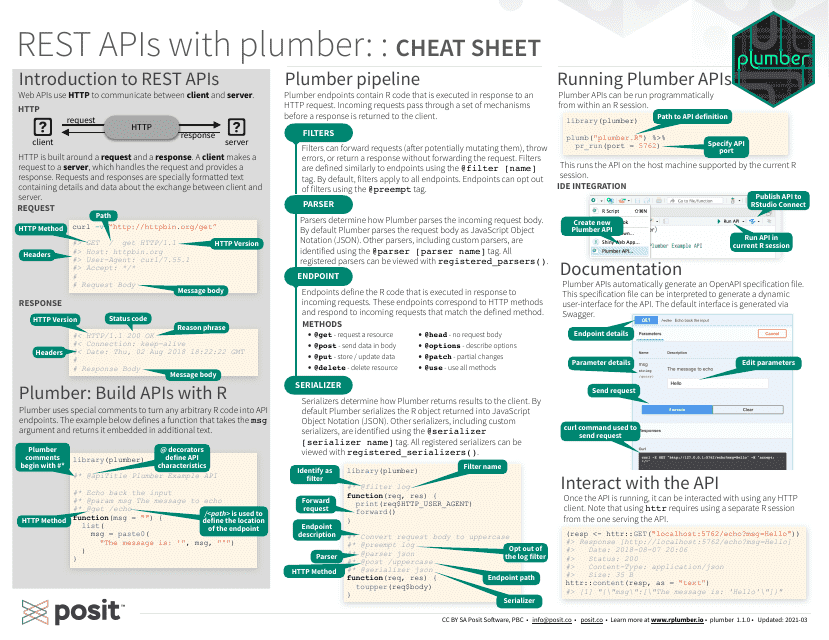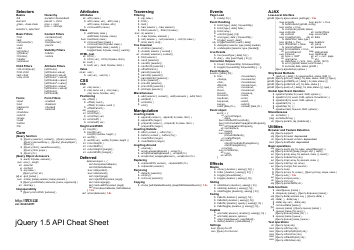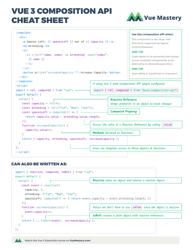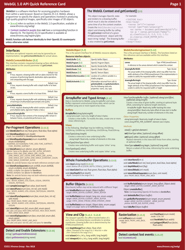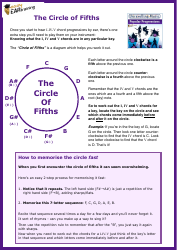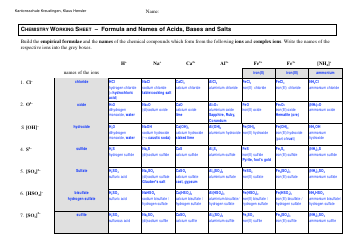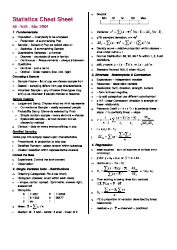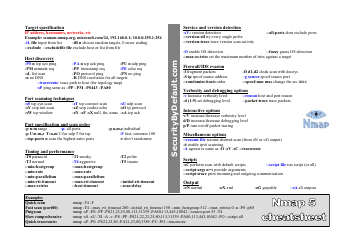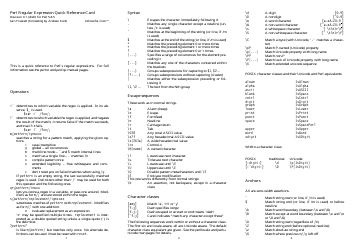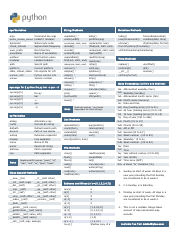R Plumber Cheat Sheet - Rest Api
R Plumber Cheat Sheet - Rest API is a resource that provides guidance and instructions on creating and managing RESTful APIs using the R programming language. RESTful APIs are a way for applications to communicate and exchange data over the internet. The cheat sheet helps developers understand and utilize the features of the Plumber package in R for building and deploying RESTful APIs.
FAQ
Q: What is R Plumber?
A: R Plumber is an R package that allows you to create RESTful APIs using R code.
Q: What is a REST API?
A: A REST API is an architectural style for building web services that allow different systems to communicate with each other over the internet.
Q: How do I install R Plumber?
A: You can install R Plumber by running the command install.packages('plumber') in R.
Q: How do I create a REST API using R Plumber?
A: You can create a REST API using R Plumber by annotating your R functions with special comments using the #* notation.
Q: How do I run a Plumber API?
A: You can run a Plumber API by calling the plumber::plumb() function on your R script and then using the plumber::run() function to start the API server.
Q: Can I deploy a Plumber API?
A: Yes, you can deploy a Plumber API to various hosting platforms such as Heroku, Docker, or RStudio Connect.
Q: How can I handle HTTP requests in R Plumber?
A: You can handle HTTP requests in R Plumber by using the appropriate decorator functions such as @get, @post, @delete, etc.
Q: How can I document my Plumber API?
A: You can document your Plumber API using special comments in your R code that start with #'.
Q: Can I test my Plumber API?
A: Yes, you can test your Plumber API using tools like Postman or curl.
